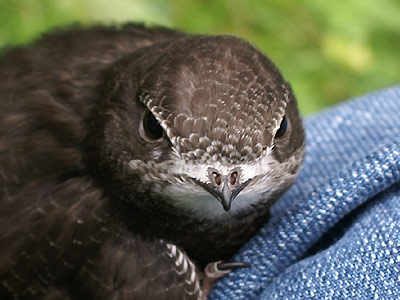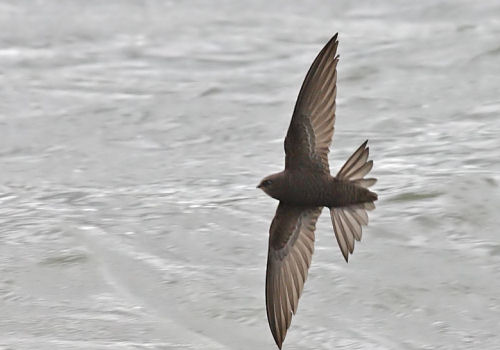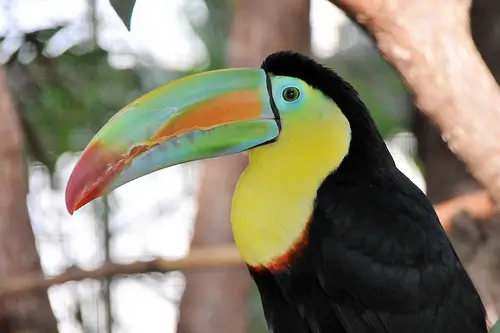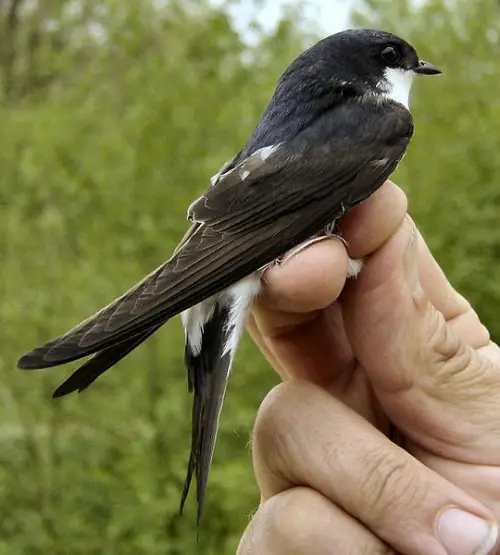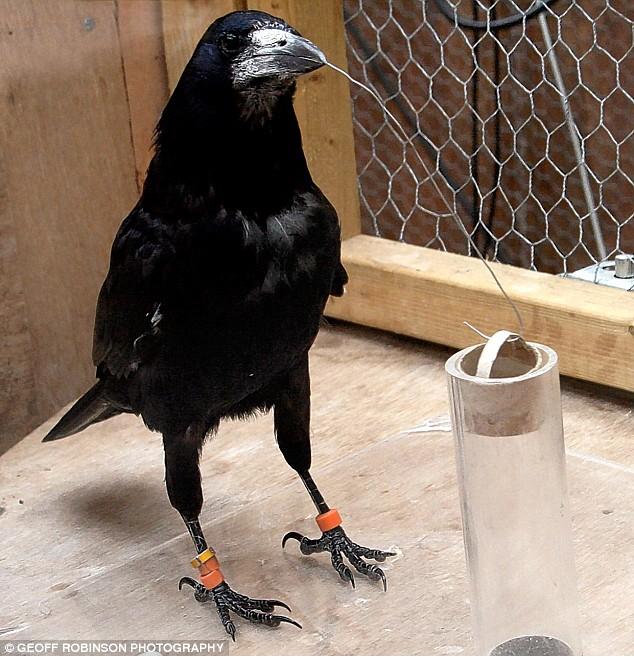Common Swift
The Common Swift spends most of its time in the air. In fact, the bird has so short legs that it can’t start flying directly from the ground, thus the bird becomes defenseless on the ground. What’s more amazing, the Common Swift can spend three years flying in the air and not landing a single time.
This species reach a size of about 17 cm, with a wingspan of 38-41 cm. The plumage is blackish brown, only the area below the chin is gray. The bird’s wings are long and sickle-shaped, and they can move independently of each other, which allows the Swift to perform sudden maneuvers in the air. These birds nest in areas ranging from Northern Africa, through most parts of Europe and as far east as the shores of the Pacific Ocean. They spend the winter in Africa, south of the equator.
Amazingly, this bird can perform everything necessary for survival, while being in the air, including drinking, eating and mating. The Common Swift lands only when building a nest and resting. The short legs with sharp claws are suited for attaching to cliffs and walls, even completely vertical ones. When in flight, the wings are also used for steering, as the tail is too short.
In August and September, the Swifts leave Europe and start their journey to Africa. The sharp claws are extremely useful during this flight, as rests are needed when measuring the multiple thousand kilometer long journey. Although the young birds hatch before the migration starts, observation shows that many of the young Swifts don’t survive the long journey.
Common Swift’s diet consists of bugs, most often flying ones which are caught in the air. The bird flies with an open beak, catching prey by surprising it with swift maneuvers or simply quick flying – one species of Swift can reach a speed of 320 km/h. When gathering food for recently hatched chicks, the bird collects bugs in its elastic throat sack, and after it’s full, the bird returns to the nest and feeds the young.
These birds mate June through July. After copulation, which takes place in the air, the pair finds a suited place for a nest. It’s very common for a nest to be constructed in an area inhabited by humans and even bird houses. The female lays 2-3 eggs and both the parents take turns with the incubating. The parents feed chicks for 35-56 days, depending on the weather – if the weather is bad, the young Swifts learn to fly later than they would if the weather was good. Soon after leaving the nest, the young need to face a tough challenge – the migration to Africa.
Although in some places the populations of Common Swifts have disappeared, they are still seen in quite large numbers in cities and many other areas. As they don’t seem to be troubled by human presence, we can expect this species not to become endangered anytime soon.
